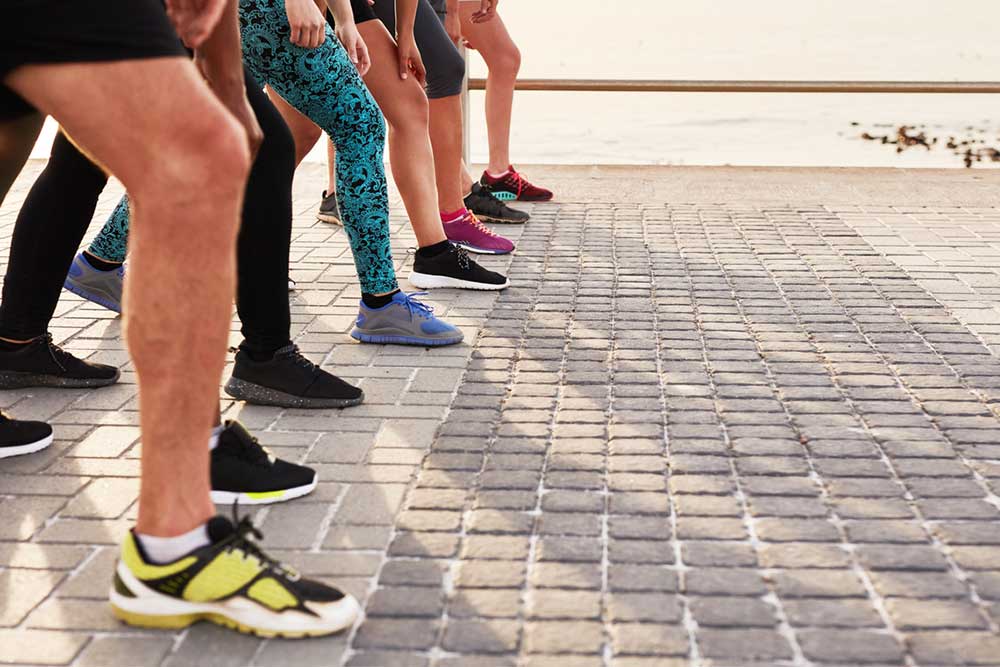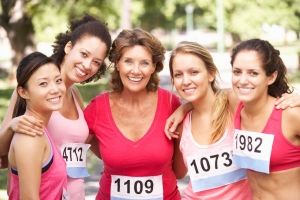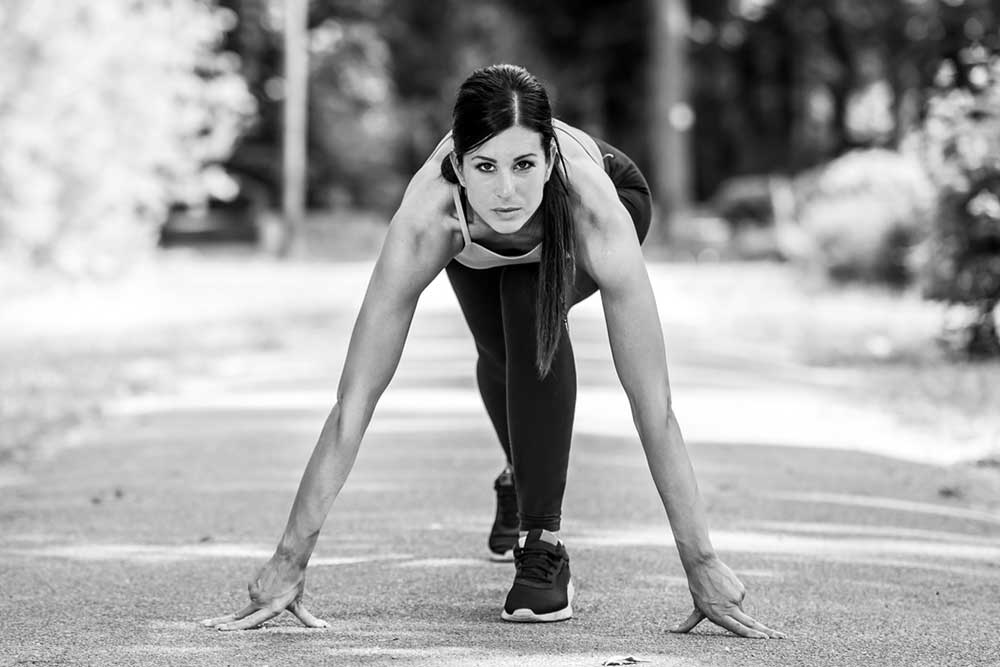Improve Pace By Running With Others

Catherine O’Brien
I enjoy running alone and am intimidated at the idea of running with others. Am I slowing them down? Am I going to fast? What if I want to stop for a water break? Because of this, I have adopted a pretty solo running regimen which has proven to be a great time to clear my head and enjoy the outdoors. While I love my solo runs, I found that my pace was starting to plateau.
A friend recommended that I run with others to help me shave off time and, although I was nervous and skeptical, the clock did not lie. Sure enough, it has been working and I have been able to maintain paces for multiple miles that I previously haven’t been able to reach for even 1 mile.
This personal finding led me to research the topic of running alone versus running in a group / with a partner. I was pleased to find research conducted on this very topic which analyzed the difference in pacing strategy, performance and mood state between independent runners and group runners.
The Study
Tomazini, Pasqua, Damasceno, Silva-Cavalcante, de Oliveira, Lima-Silva and Bertuzzi (2015) hypothesized that the presence of competitors would lead runners to adopt a quicker pace at the beginning of a timed trial and that this quickened pace would result in overall better times. They also predicted that the increased intensity of running with competitors would lead to decreases in post-race vigor and increases in fatigue compared to independent runners.
Participants were nine healthy male long-distance runners who reported engaging in low-intensity aerobic training around 4x per week.
In this repeated measures design study, participants visited the lab five separate times.
First Session
 Researchers took a series of body measurements before participants underwent the maximal incremental test. This test was administered on a treadmill to determine participant’s cardiopulmonary fitness (measured by VO2max), peak treadmill speed (PTS), and respiratory compensation point. PTS was established based on the highest speed participants were able to maintain for 1 minute.
Researchers took a series of body measurements before participants underwent the maximal incremental test. This test was administered on a treadmill to determine participant’s cardiopulmonary fitness (measured by VO2max), peak treadmill speed (PTS), and respiratory compensation point. PTS was established based on the highest speed participants were able to maintain for 1 minute.
Respiratory compensation point was determined by a constant increase in VO2 and the decreased in the expiratory fraction of CO2.
Second Session
Participants underwent a speed-constant test to measure running economy (RE). For this test, participants warmed up with a five-minute treadmill run (8km/hr.) followed by a 3-minute recovery. The treadmill speed was increased to 10km/hr. and participants ran for 5 minutes and RE was determined by the mean VO2 during the last 30s of the test.
*The purpose of the two initial sessions was to obtain a clear understanding of each participants’ fitness level so that they could be appropriately matched to other runners with similar fitness levels and speeds in later sessions.
Third Session
The third session was a self-paced endurance running test. The purpose of this test was to familiarize all participants with the 3-km race. They completed a 10-minute warmup and then were instructed to run the 3-km run as rapidly as possible as though they were competing.
In the fourth and fifth conditions participants either ran in a collective group (COL) or ran the course independently (IND). In the collective running conditions, participants were placed with other runners of similar abilities and speeds. The fourth and fifth sessions were counterbalanced so that some participants did the collective run first and some did the independent run first so as to eliminate effects due to practice or fatigue. Affective state was measured before and after both the COL and the IND conditions using the Profile of Mood States (POMS).
The Findings
Consistent with previous research (and my own personal experience!), they found that the presence of competitors improved running times such that those in the collective running group ran, on average, faster than those running independently. This improved performance was most prominent in the beginning of the run (first 500m) as the collective group runners had significantly faster start times.
Interestingly, they found no difference in mood state between the independent runners and the group runners.
Takeaway
So what does this mean for us? Simply, if you want to kick your training into high gear, consider partnering up or joining a running group.
I was very hesitant to run with other people, especially people who I knew were fast and very fit. That said, I found that my competitive instincts kicked in and I fought to keep up when I wanted to stop and walk. I will still enjoy my solo runs on a regular basis but will definitely be incorporating group and / or partner runs into my routine especially when training for a race.
If you are like me and want to shave some seconds off of your running pace, pick a partner who will push you and get going!
Happy Running!
Related Article: Those Who Run Together, Stay Together
Start tracking your fitness activity and heart rate:
Fitbit Surge Heart Rate Tracker
Recommended Running Shoes: Hoka Running Shoes
(adsbygoogle = window.adsbygoogle || []).push({});
You Might Like:
Ketogenic Diet and Running: What You Need to Know
If you have been around the health and fitness space over the last few years, then you would have heard about the ketogenic diet. You know that diet that helps with weight loss, metabolic disease,...Are Runners Less Likely to Develop COVID-19?
In this weird time of COVID-19, I have heard some strange suggestions regarding how you can prevent infection. Things like drinking colloidal silver, eating more oranges, and bathing in vinegar all come to mind. But...5 Ways to Get Rid of Shin Splints
Ryan Cross, Physiotherapist Pain related to “shin splints” is one of the most common ailments that athletes will complain about. Most runners have had a run-in with the dreaded shin splints at one time or...The Most Efficient Way to Run Faster
Evan Stevens, Sprint Coach Phosphocreatine is the most immediate source of energy we have access to run faster. It is separate from the glycolytic (anaerobic) and mitochondrial (aerobic) pathways and is a way to rapidly...Upper Body Workouts For Distance Runners
When we run long distances it is crucial to focus on form, function, and balance. Running efficiency is effected by all of these, and it will subsequently impact performance if not properly addressed. By limiting...Use the Hurdle Step to Test Your Running Mechanics
An easy way to test or observe your running mechanics is to use the Functional Movement Screen (FMS) Hurdle Step approach. As you will see in the video, this technique will enhance proper running mechanics,...References
Tomazini, F., Pasqua, L.A., Damasceno, M.V., Silva-Cavalcante, M.D., de Oliveira, F.R., Lima-Silva, A.E., and Bertuzzi, R. (2015). Head-to-head running race simulation alters pacing strategy, performance, and mood state. Physiology & Behavior, 149, 39-44.
(adsbygoogle = window.adsbygoogle || []).push({});











